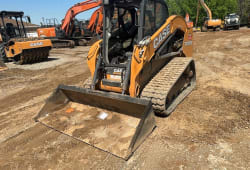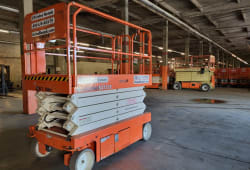AI for Construction Drawings: Can Artificial Intelligence Transform Design in 2025?
5 Min read
)
July 20, 2025
In the fast-evolving world of construction technology, artificial intelligence (AI) is making waves across every phase of the building process. One area gaining serious attention in 2025 is AI for construction drawings—a space where design, automation, and smart decision-making collide.
From drafting basic floor plans to producing full construction documents, AI has begun to change how professionals approach architectural and structural design. But just how capable is AI in this area?
Let’s break down the answers to some of the most frequently asked questions about AI’s role in construction design.
What Is AI for Construction Drawings?
AI for construction drawings refers to the use of artificial intelligence tools and algorithms to automate the creation, optimization, or analysis of architectural and engineering plans.
This includes:
Drafting 2D layouts
Generating 3D models from sketches
Creating structural drawings based on inputs and parameters
Making intelligent design suggestions based on building codes or energy efficiency standards
Tools like Autodesk's Generative Design, Spacemaker AI, BricsCAD with AI assistants, and even some custom AI CAD plugins are helping architects and contractors save time and improve accuracy.
Can AI Generate Construction Drawings?
:format(webp))
Yes, AI can generate construction drawings—and it’s getting better every year.
AI-powered platforms can produce basic floor plans, optimize room layouts, and even generate construction-ready documentation based on set constraints like lot size, occupancy codes, or HVAC requirements.
For example:
Autodesk’s generative design tools allow users to input objectives (e.g., maximize natural light, reduce material cost), and the AI creates multiple blueprint options.
AI in BIM (Building Information Modeling) software can auto-generate MEP (Mechanical, Electrical, and Plumbing) layouts from architectural plans.
This means less time on repetitive tasks and more room for creativity and engineering insight.
Can AI Draw Building Plans?
AI can draw building plans, especially when combined with machine learning and generative design algorithms.
Many cloud-based platforms now allow users to input parameters such as square footage, number of rooms, building type, or energy goals, and the software will automatically propose layouts that meet those criteria.
Examples of AI drawing building plans include:
Spacemaker AI by Autodesk (early-phase site layout planning)
Finch3D, which adjusts floorplans in real-time based on site constraints
AI-assisted tools integrated with SketchUp or Revit to draft schematic-level designs
While human oversight is still needed, these tools are redefining speed and flexibility in early design stages.
Can AI Do AutoCAD Drawings?
AI is already being used to automate tasks in AutoCAD, especially repetitive or logic-based ones.
AI-enabled plugins or integrations can:
Automatically label and scale drawings
Suggest corrections or compliance changes
Convert hand-drawn sketches into digital plans
Extract design data from scanned blueprints or PDFs
AutoCAD’s ecosystem includes tools like Dynamo for AutoCAD, which enables rule-based modeling using AI-like logic. While AI isn’t replacing drafters anytime soon, it’s making drafting far more efficient and less error-prone.
Can AI Be Used in Construction Beyond Drawings?
![]()
Absolutely. AI is being used in construction far beyond just design work. Other applications include:
Predictive maintenance for heavy equipment
Real-time project monitoring using drone data and AI image recognition
Cost estimation and scheduling optimization
Safety monitoring with wearable sensors and AI dashboards
In terms of design workflows, AI also plays a role in clash detection, energy modeling, permit checking, and design code compliance—making it an indispensable part of modern construction planning.
Benefits of Using AI for Construction Drawings
Using AI for design and documentation offers a range of benefits:
✅ Faster turnaround for producing construction sets
✅ Fewer errors and omissions in early-stage drawings
✅ Smarter layouts based on building performance goals
✅ Automation of repetitive tasks (like labeling, dimensioning, or spacing)
✅ Better integration with digital twins and BIM platforms
Ultimately, these benefits translate to saved time, lower costs, and improved building quality.
Challenges and Limitations of AI in Construction Drawing
Despite its promise, AI still has limitations:
AI can't fully replace human creativity and architectural judgment
Some platforms still require clean data and standard input formats
Skilled oversight is needed to validate AI-generated plans
Compatibility issues can arise when integrating AI tools with legacy CAD or BIM systems
That said, the technology continues to improve, especially as more construction professionals adopt digital workflows.
What’s Next for AI in Construction Design?
Looking ahead, we can expect:
Smarter integrations between AI and BIM platforms like Revit and Archicad
Fully generative end-to-end design systems, from site analysis to stamped drawings
AI that learns from past project data to improve future designs
Increased use of voice and gesture-based design interfaces powered by AI
As AI tools become more intuitive, the barrier to entry will shrink, making smart design accessible to more professionals—from small firms to large-scale developers.
Final Thoughts
AI for construction drawings is no longer a futuristic concept—it’s here and evolving fast. From generating building plans to optimizing AutoCAD files, AI is helping construction professionals work faster, smarter, and more precisely than ever.
Whether you're an architect, builder, or project manager, keeping up with AI in design workflows is quickly becoming a competitive advantage.
So, can AI generate construction drawings? Absolutely. The real question now is—how will you use it?

Caleb Woods is an experienced content specialist and an editor at Boom & Bucket, blending his journalism background with expertise in the heavy equipment industry. He delivers engaging, informative content to help professionals stay informed and make smarter decisions in the machinery market.











